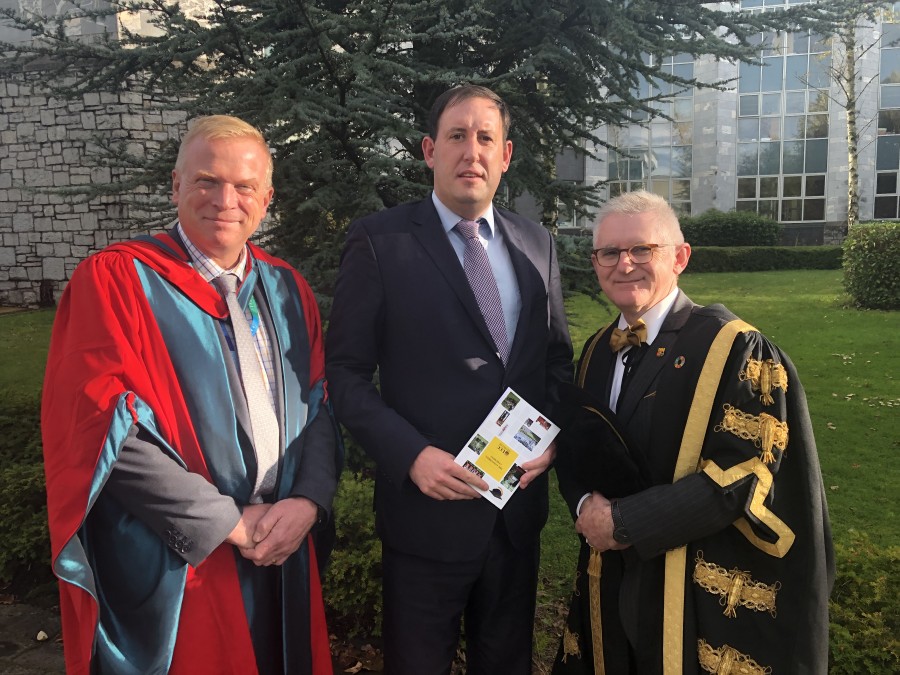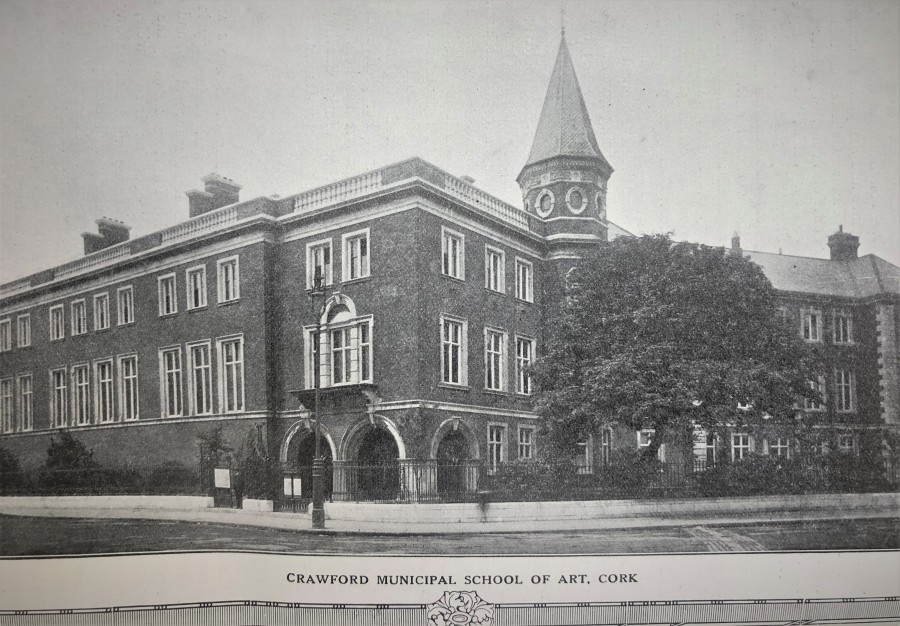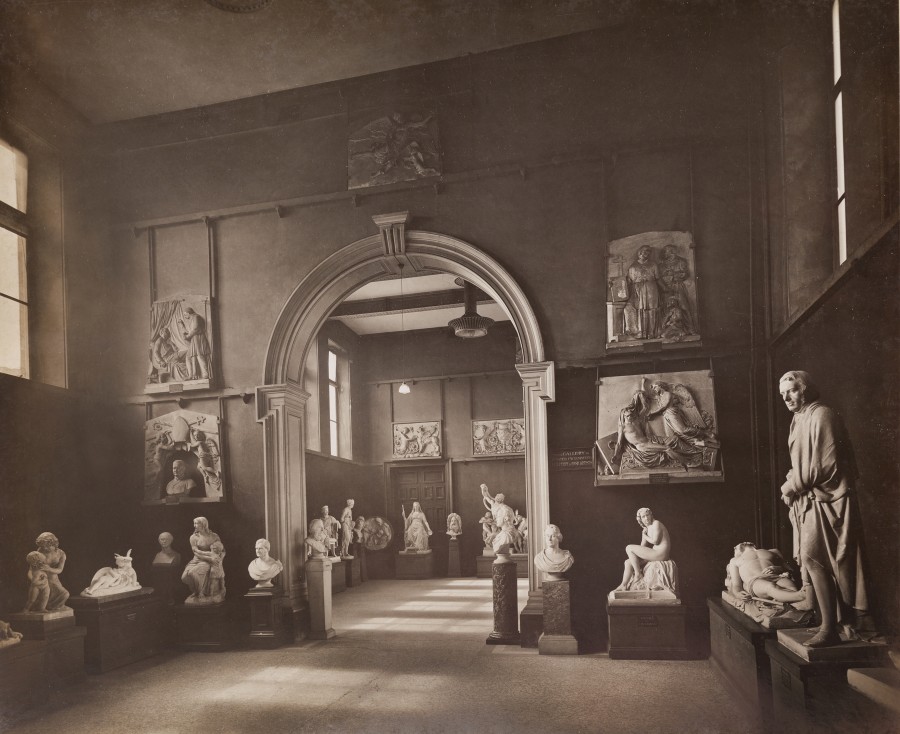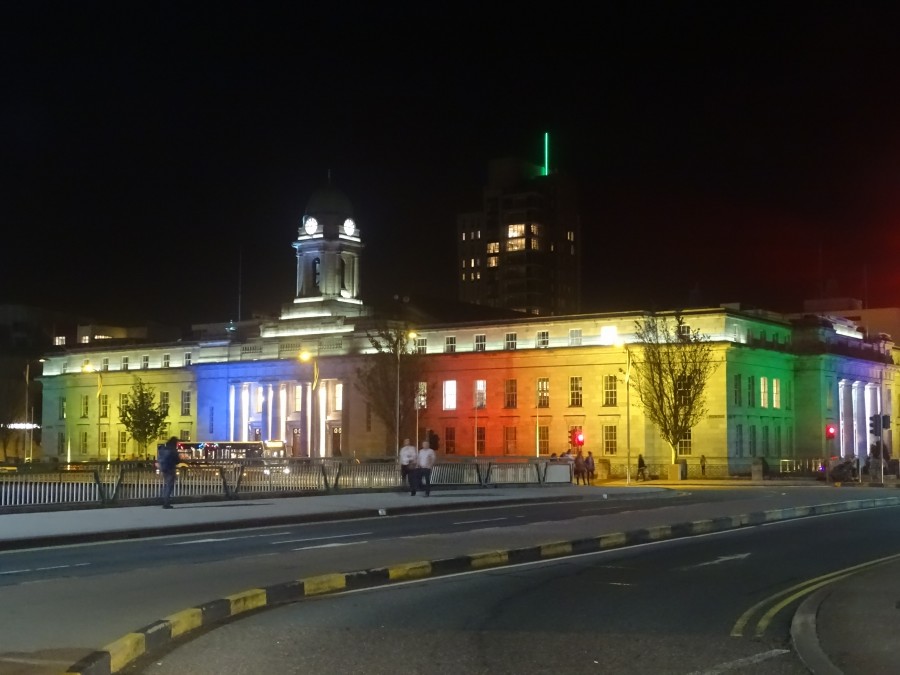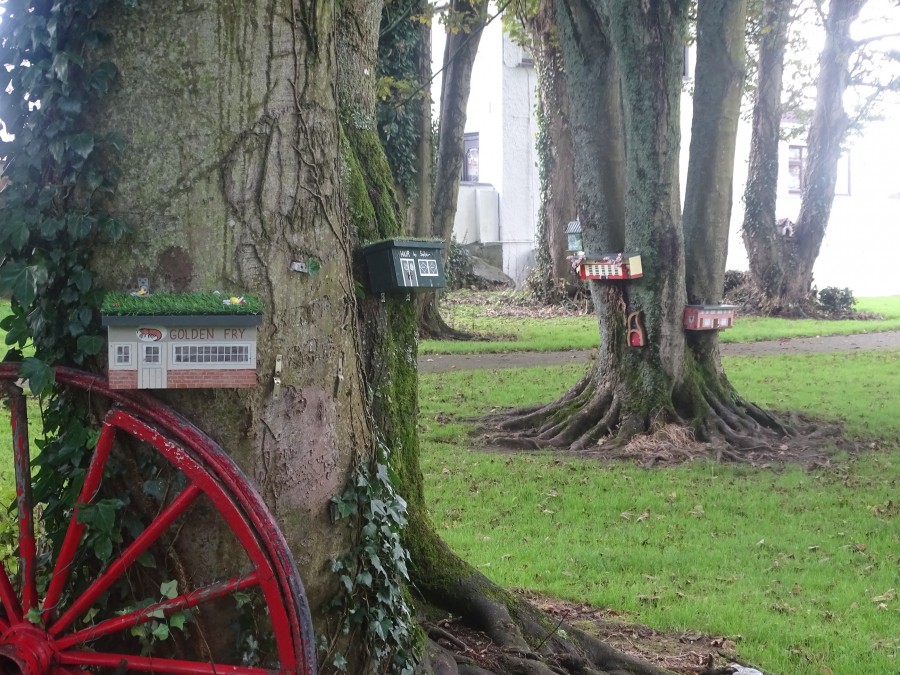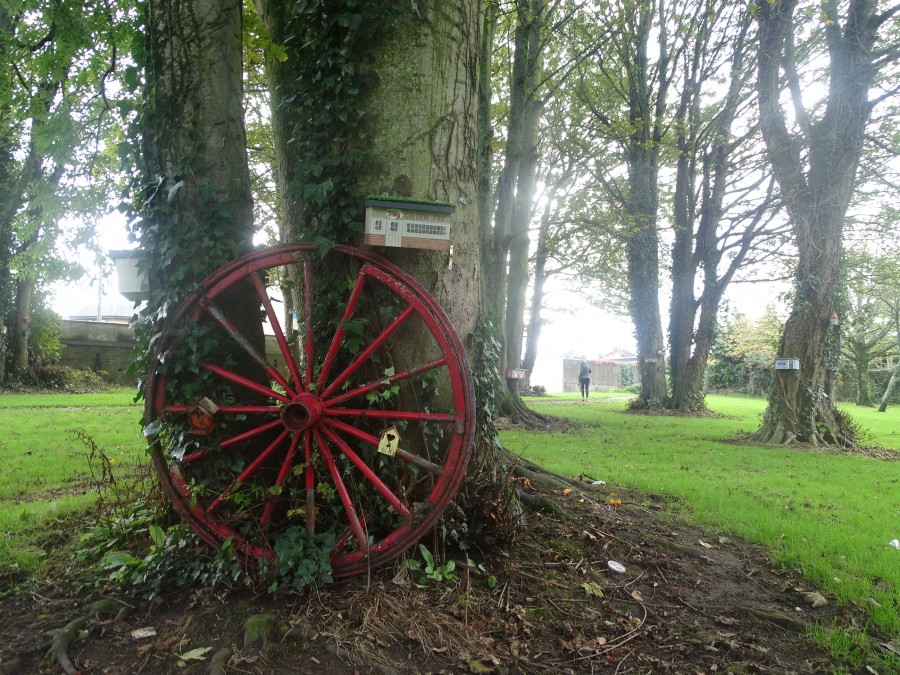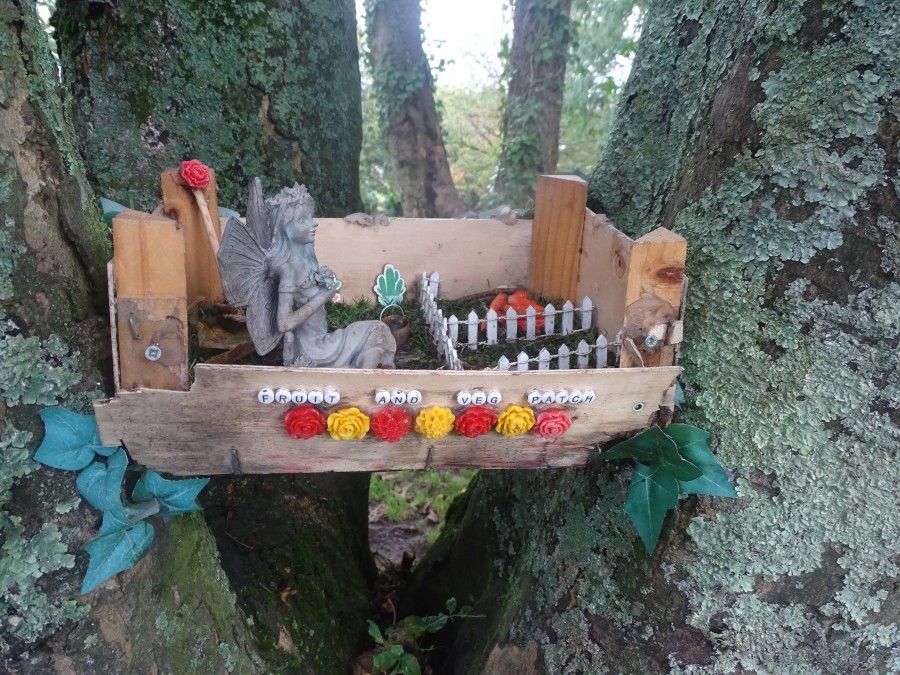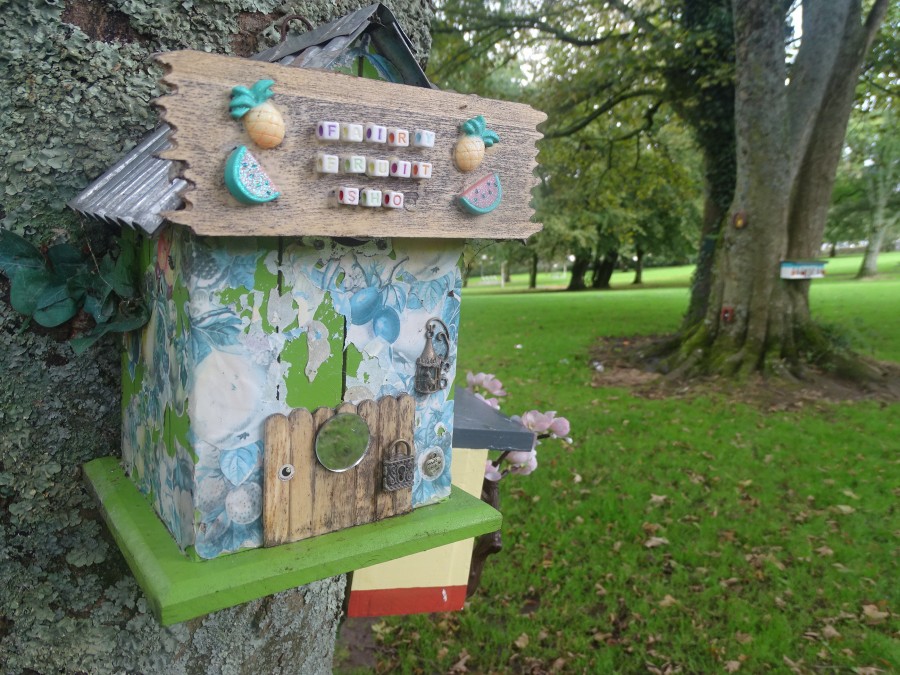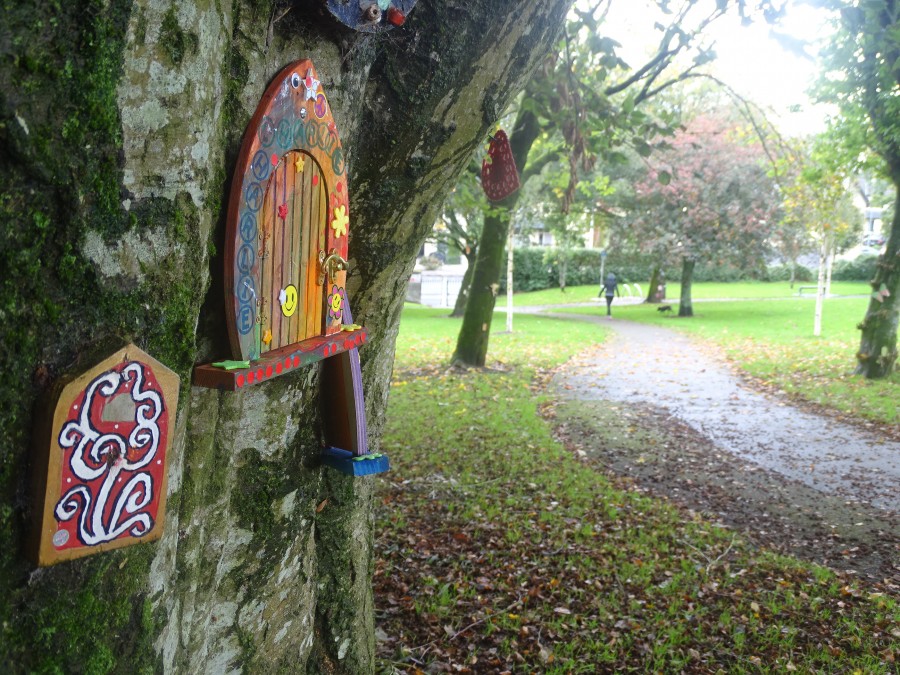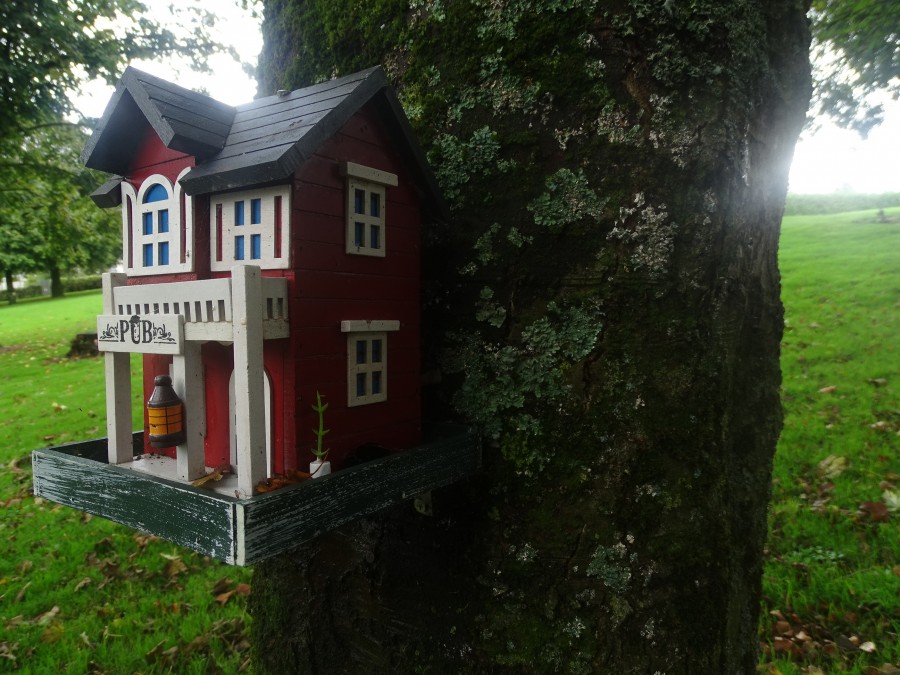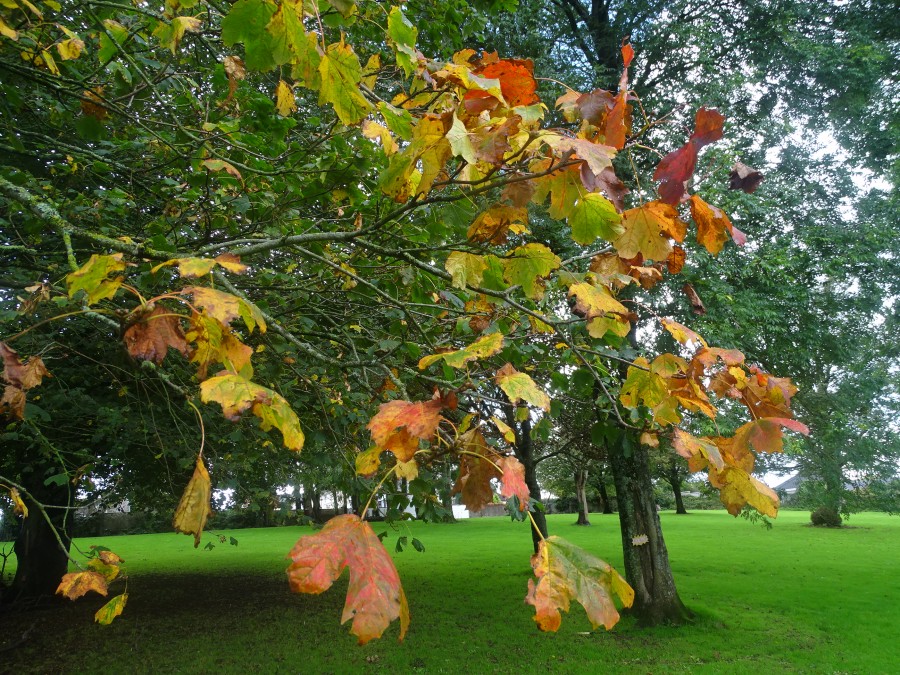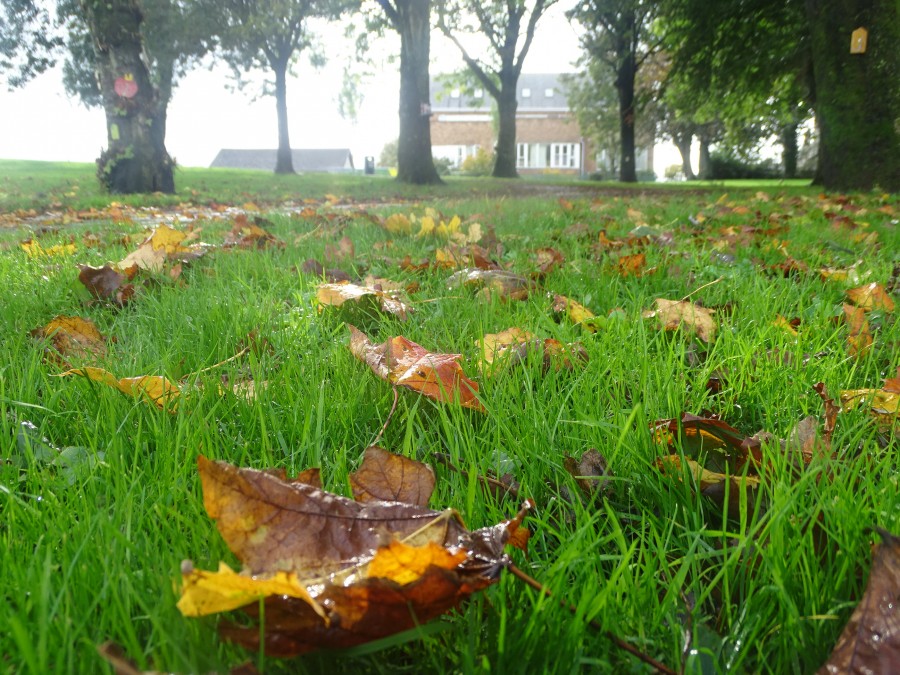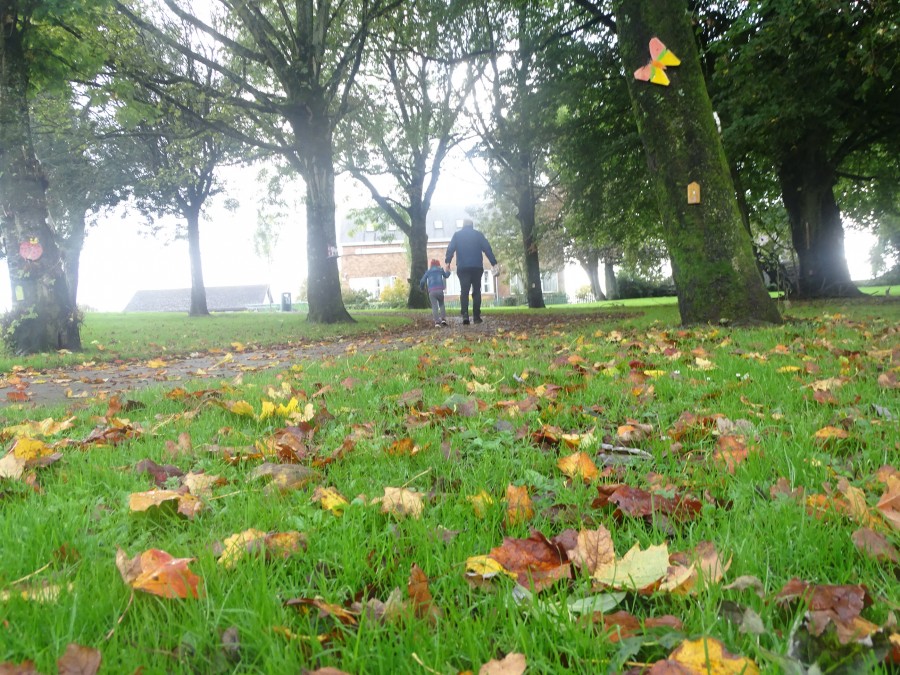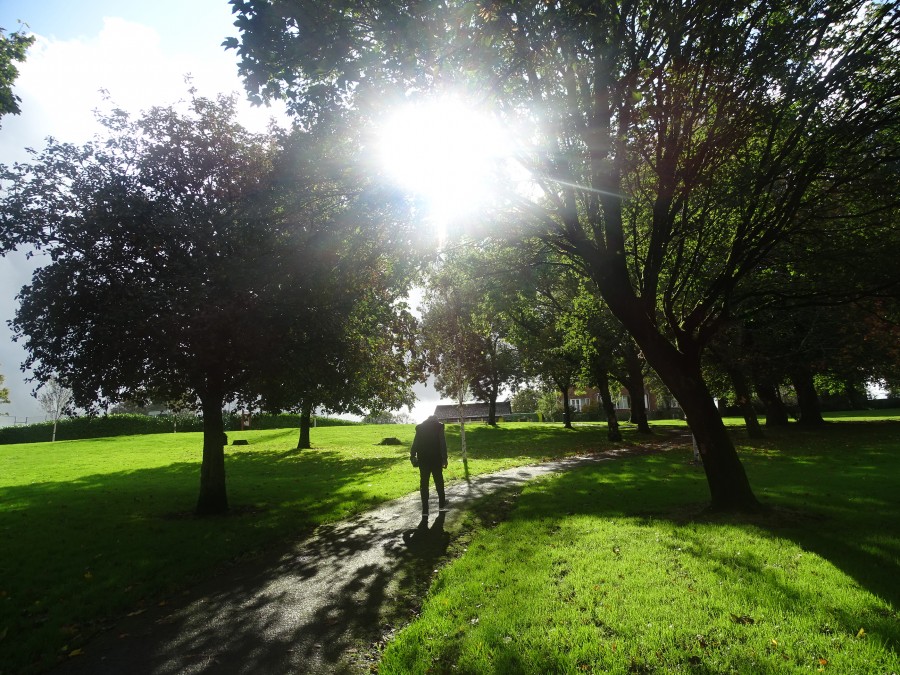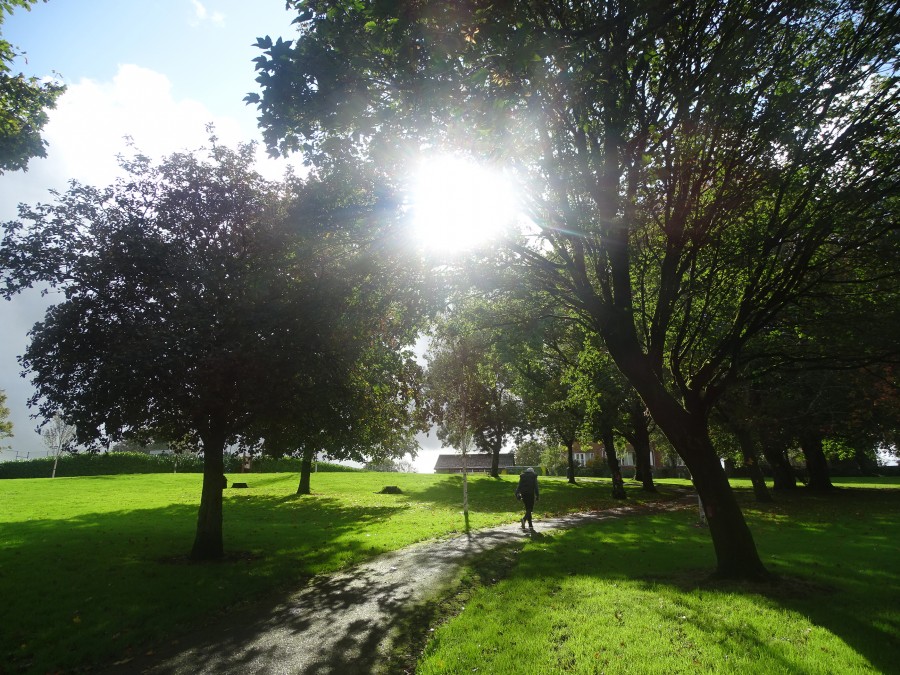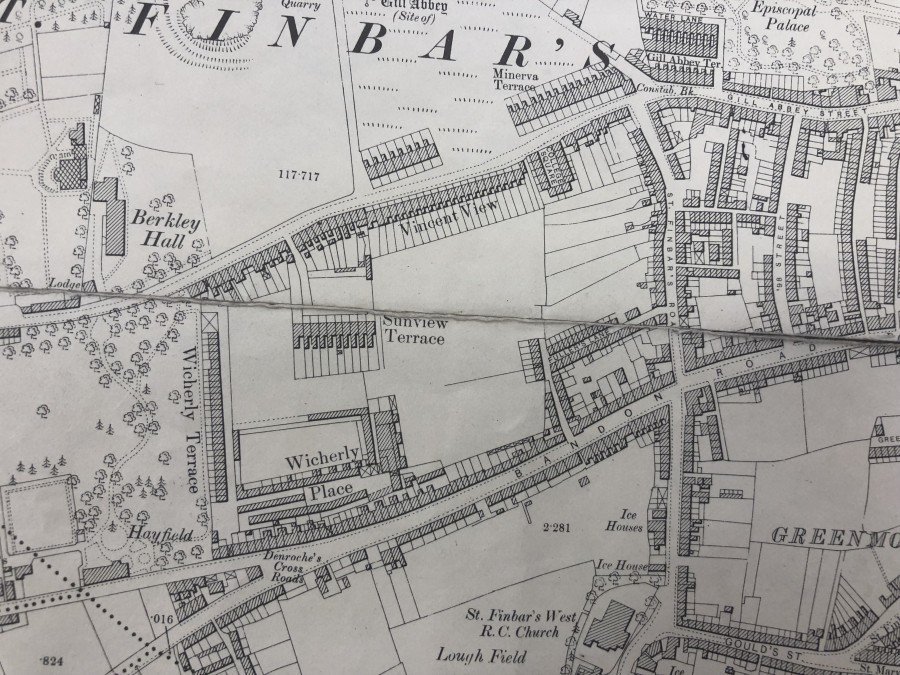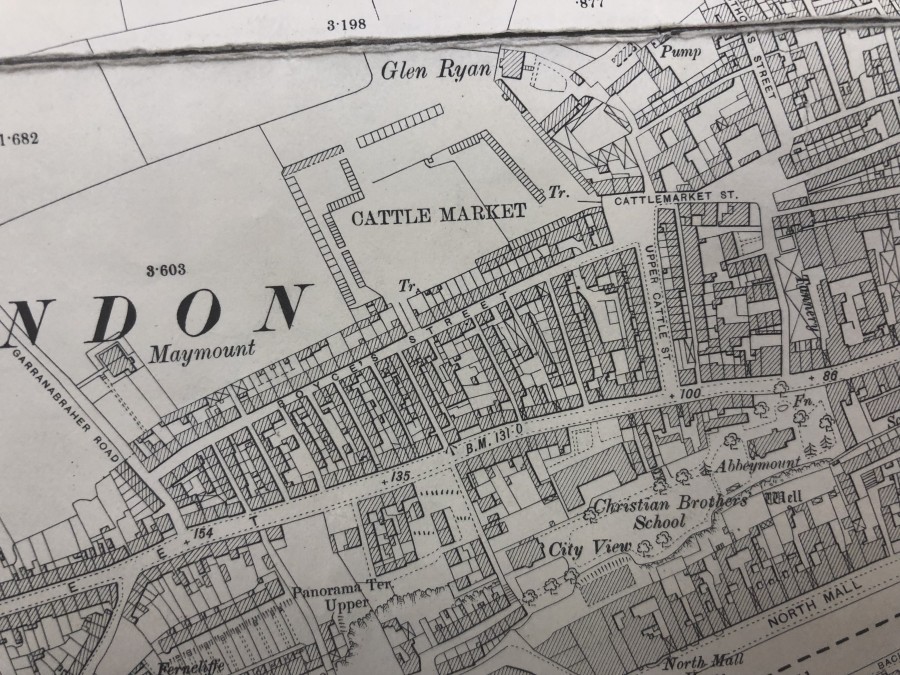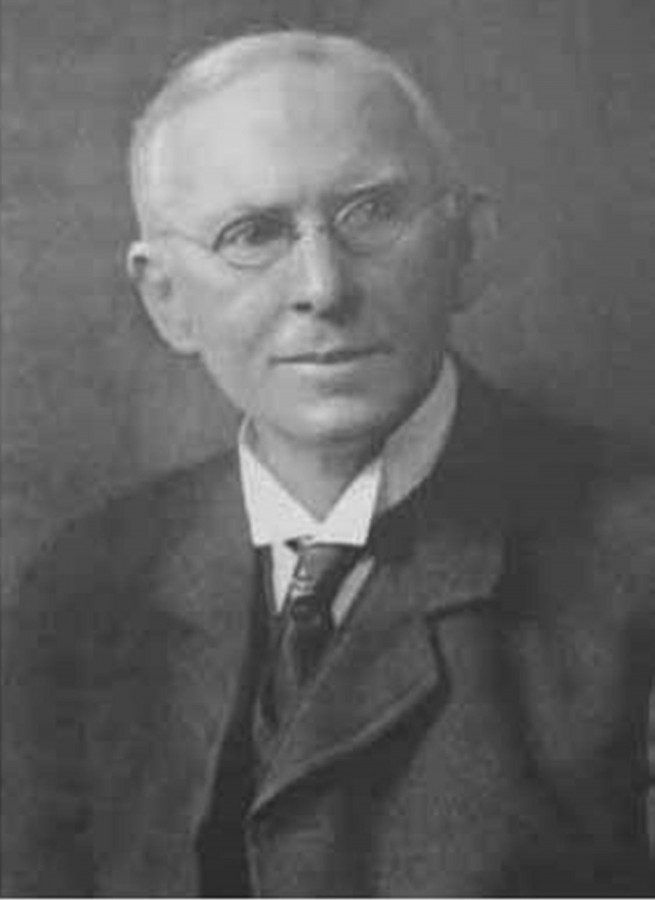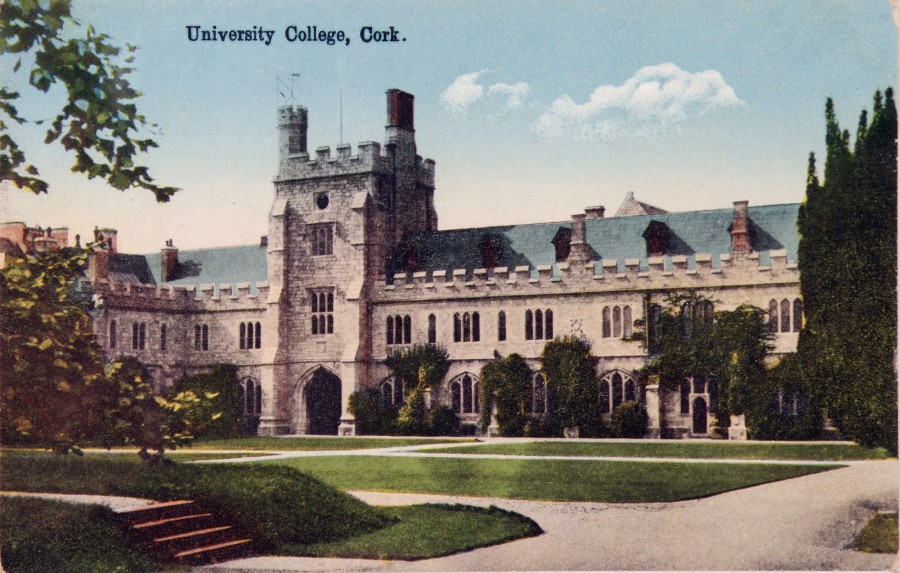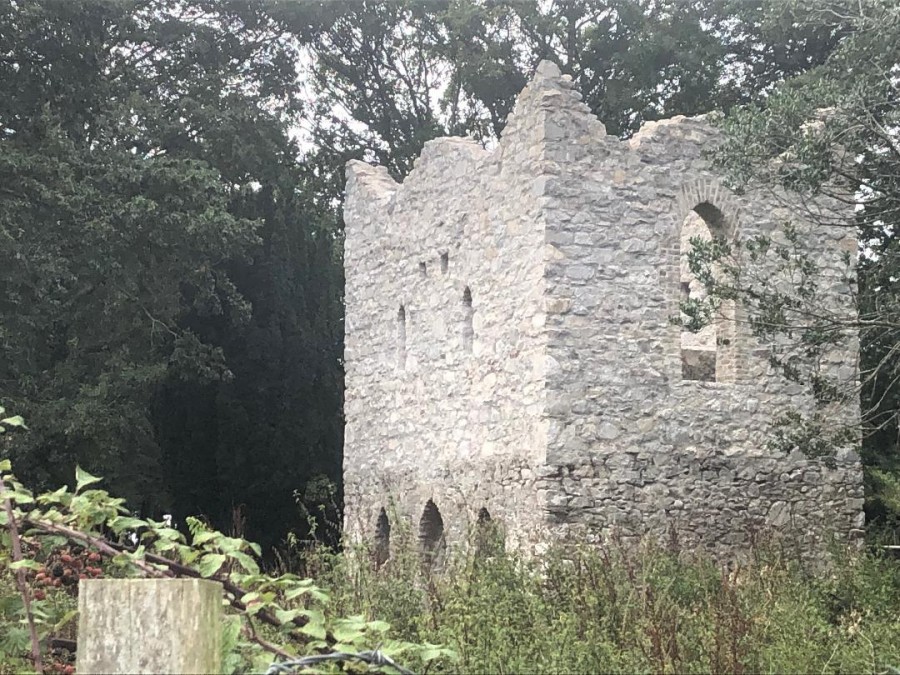Cllr McCarthy to stage An Evening of Musical Theatre, Sunday 20 October 2019
Douglas Road Cllr Kieran McCarthy directs Cork City Musical Society’s “Greatest Tunes and Melodies, An Evening of Musical Theatre” at the Firkin Crane, Shandon on Sunday 20 October at 8pm. The Musical Director is Jimmy Brockie and the producer is Yvonne Coughlan of Red Sandstone Varied Productions. Tickets are e18 and are online at www.firkincrane.ie.
Cork City Musical Society have staged 3 musicals and multiple community concerts since the society’s founding.
Founded by Cllr McCarthy in 2015, it was years of performing in shows and being involved in community work that led Kieran to create the musical society.
Cllr McCarthy advocates that Cork City is vibrant in drama education, various musical genres, musical theatre and all forms of opera, all of which are brought to the Cork masses through stage schools and theatres.
“It goes without saying that a rich vein of musicality runs underneath our city, Cork’s DNA embraces the promotion and development of music as an artistic discipline to be developed and one that brings a community together to engage with and appreciate it. The city in musical theatre terms is particularly blessed by several stage schools, small and large, who promote amongst our young people creativity, skill development, education, performance, community building and audience development, and the charity of sharing their craft, amongst other important traits”.
“Amateur musical societies are multiple in nature up and down the country. All bring their local communities together under a volunteer and charity umbrella – collaborating and bringing people together to create an outlet for people and to put drama, music and all ultimately form a key cultural vein within towns and villages”.
Continuing Cllr McCarthy highlighted that Cork City Musical Society in particular “focuses on the aspect of community building and the promotion of musical theatre amongst adults and the idea of inclusivity and self-development for all who wish to engage with it”. Check out Cork City Musical Society on facebook for more details.
Dr Kieran McCarthy. Conferring Address, Humanities Conferrings, National University of Ireland, Cork, 17 October 2019
President of UCC, distinguished members of the academic platform, ladies and gentlemen, and most significantly graduates here this afternoon. It is an immense honour to be able to address you.
Those who have collected their degrees this afternoon you should be very proud of your achievement. Have no doubt that the top platform is very proud of you and your family and friends present are beaming with pride. Days like today are ones to be treasured.
In our busy lives, we often don’t take the time out to celebrate our achievements. And I hope that for many it won’t be your last parchment or your last efforts in learning something new, and that today is just one chapter in an interesting and engaging journey of your life that you are trekking across. Whether you are a young student or pursuing education from an older adult’s perspective, lifelong learning is very important.
Do take the moment to reflect on the scroll within your hand, and please don’t consign it to a drawer but do frame it and put it up. And most importantly use what you have learned – whether that be new skillsets or the beginning of a lifelong love with sub-topics within your chosen subject fields.
It’s twenty years since I graduated with my BA degree in archaeology and geography – and one of the first aspects I learned is that the afterlife of a BA degree is up to yourself. From the perspectives of a humanities degree, you have all learned new skills sets, new ways of looking at the world, at society, at community life – to mind it, to engage with it, to push forward narratives, and add to knowledge itself.
I took what I learned from UCC and applied it to a hobby which has also become my career – that of a local historian plus have applied it to my several other hats – in my community work, my local government work and my European work. I am for all intents and purposes one of many local historians which Ireland possesses – guardians of stories and story-telling and who are very passionate about their home place.
I spend large tracts of my time collecting histories and memories of Cork’s past gone by. I criss-cross the landscapes of Cork City and regions looking to find what makes it tick and looking to see how this “tick” can be harnessed to make my home city, region and its communities a better place.
The heritage of Cork survives in various conditions from complete disappearance to physical and metaphorical ruins to surviving because it is being used in everyday lives in a personal way.
Shortly after my BA degree, I embarked on a post degree personal project – an exploration of the River Lee Valley from source to city; I estimated at the start of my personal project that it would six months- in truth it took six years to reach the weir at the Lee Fields.
One aspect for certain is that the more I researched the places within the valley or the more doors I knocked on, the more information came to the fore. What is also apparent is that everybody’s view of the world is different. It could be an insider’s view or an outsider’s view, such as my own. For most people I have met, heritage was a personal and collective experience focusing on their own roots. In fact, the historical data played ‘second fiddle’ to their personal stories. It has been interesting to see how stories and values have been handed down, and how each successive generation has taken it in turn to hold a torch for some element of the past in the present.
One recurring aspect is how much the region’s cultural heritage runs metaphorically in ‘people’s blood’. There were a large number of people who noted, ‘my father used to say’ or ‘my mother used to say’. That sense of inheritance is important and it is more than just honouring people. It conjures up debates about achievement and loss, and it is more than just recalling the memory of a few. For each person I interviewed many more are represented through their life experiences. One is allowed to ponder on the power of the individual and their contribution to society, whether at a local or international level. The evolution of ideas can be mapped.
So one of the most abiding aspects I have learned over the years and one I have become a very firm believer that everyone has a story to tell – and everyone engages with the world in their own personal way. Hence respect for each personal perspective is paramount. But not just the personal perspective but how stories interact with each other in community life.
All of you will bring what you’ve learned back to a community you’ve come from or you will carve out a career in a new communities.
With the humanities degree you receive today you are the next generation of a community of story collectors and story tellers. There is a power in the scroll you hold. You now have the responsibility to be guardians of what you have learned.
From my own journey, I regularly see the power of a community outreaching and working together. Of course, the nature, depth and value of participation in creating inclusion or bringing people together are significant factors. As an exercise, in preparing for this address I broke up the respective letters of community, I came up with the following thoughts, which I wish to share, and which I hope connect to some of where you find yourself this afternoon:
-
The C is for citizen; active citizenship develops a sense of belonging. One is also taking ownership of one’s life direction. So please Use your degree.
-
O is for onus and responsibility. I think that any community in particular has a responsibility to its people and must move forward with a plan as best as possible. So please move forward with your plan.
-
The first M of community is for motivating. A group of people together can be inspiring, encouraging, empowering and enabling. You are an enabler of your own future.
-
The second M is for moving forward. The future is a worrying element for many people. But as we grow older we all grow wiser. You can’t buy wisdom, go and earn it.
-
U is for understanding. From my own travels and attending community meetings, every attender has something to bring to a community. As a result, community has various meanings to people. Listen and engage with people to carve your future.
-
N is for the next generation in the community. New people bring vibrancy and energy to any work they engage with. Most are also looking for opportunities to develop their talents and to fit in. Community adds to help people develop in personal ways. Stay fresh and dynamic and stay focussed.
-
The I is for ideas. Brain storming and a plan on paper is important. People need direction, something to work toward. Otherwise, the heart of the community will become stale and disillusioned. Flesh out your ideas.
-
T is for tolerance of the ‘other’. Working together as a team, getting everyone involved is important. People working together can stop the decline of local living places and bring them to renewed states of stability and viability. Everyone’s story is important to the mosaic, which is life.
-
The Y of community is about the yearning to be part of something- to do something purposeful, to hone our personal talents, to create and sustain strong bonds. Yearn and go do.
These are just ideas. If you are a story-teller, then building community capacity must be a core element of your future plan in passing on knowledge and developing a sense of identity and a sense of pride.
If you are the story tellers of the future, then today closes a page in one chapter but as you walk out in a few minutes into the Atlantic light of Ireland’s southern capital, a new page will appear. It is up to you what you wish to write on it.
Enjoy the celebrations and thank you for listening to me on your special day.
Ends.
Kieran’s Our City, Our Town, 17 October 2019
Kieran’s Our City, Our Town Article,
Cork Independent, 17 October 2019
Tales from 1919: A Tour of the Cork School of Art
On the week of the 24 October 1919 under the auspices of the Cork Literary and Scientific Society, a successful conversazione or public conversation event was held at the Cork School of Art within the Crawford Art Gallery on Emmet Place. In their dispatches of their activities to the press that evening the Society refer to the work by the pupils of the craft and trade classes and give an insight into life within the school one hundred years ago.
The Society praised the efforts of Corkman and Head Master Mr Hugh Charde, who was in the job since February 1919. In the preface of the School of Art’s 1919 prospectus the objects of the institution were given – “to give a practical knowledge of drawing, design, modeling, painting, etc and to furnish useful training to those whose vocation depends in any way on the application of art to the trades, crafts, or professions; so that the workman can become more skilled in his trade or craft and the designer possesses more knowledge in the application to the various processes of manufacture and handicraft”. On the evening of the conversazione, the work being pursued by the pupils of the trade and craft classes were shown to the members of the Cork Literary and Scientific Society. Explanation was given by the teachers to the visitors of the history and ethos of the school. Established originally in 1850 in the old Custom House, the School of Art was re-established in 1877 and subsequently inspired the funding and building of the Crawford Art Gallery within a few short years.
In October 1919, passing through the sculpture galleries, the visitors of the Cork Literary and Scientific Society came first to the modelling class, under the direction of Mr Michael McNamara. Here the pupils were engaged in modelling in all its stages, from the work of the seniors, copying a head from the antique, to those who were engaged on copying “ornament of various kinds at every stage of elaboration”. The “sureness and skill” of even the most junior pupils were much commented upon by the visitors. Another department, the wood carving class, also under Mr McNamara, evoked the same positive comments, and the many finished specimens of the work of this class shown around the building were much admired.
Passing from the modelling room, the next class was that in artistic lithography. There throughout the evening there was always a crowd of visitors listening with interest to the full and painstaking explanation of the master, Mr R Baker, and admiring the work of his pupils, and the practical skill they showcased. In the room devoted to enamelling and art metal work, under the direction of a Mr Archer, every stage of the work was to be viewed. Here stories were relayed about Cork silver work and the ongoing efforts to keep the interest in silver-smithing alive in the City. The painting and decorating class, under Mr D Fitzgibbon, also highlighted evidence of sound practical teaching and an artistic sense of the possibilities of the craft.
The classes on the upper floors were of special interest where the beautiful art needlework and embroidering of Miss O’Shea’s class, the lace work of Mrs Allen’s pupils, and the artistic leather work of the class conducted by Miss Reynolds and Miss O’Neill were displayed to interested visitors.
In the library of the school the visitors had an opportunity to see some of the art school’s collection – supplemented by many curious books and papers from the Cork Carnegie Library selected by James Wilkinson, the librarian of that establishment.
A display of microscopes, showing many interesting slides, the circulation of the blood, also made a most interesting exhibit, arranged by the kindness of Prof D T Barry, and under the charge of Dr J M O’Donovan and some of the students of University College.
The principal of the School of Art Mr Hugh Charde was proud of the evening’s work. A native of Cobh, Hugh Charde (1858-1946) was Principal of the Crawford School of Art from 1919 to 1937. He was a teacher in the School since as far back as 1889 and received his early tuition in the Drawing School of the North Monastery. He later studied at the School of Art under Mr James Brennan, RHA. He then undertook an extended Continental studentship. He studied abroad at the Ecole des Beaux-Arts at Antwerp under M. Verlat, and at Paris under celebrated artists of their day. In 1889, Hugh was appointed as an assistant teacher in the School of Art in Cork. He was made second Art Master in 1907 and Principal in 1919 following the death of the principal William Mulligan.
Apart from instructing and encouraging young art students, during his forty-eight years connection with the School of Art, Hugh Charde was a painter of great ability himself. Of latter years he specialised in water colours. He was imbued with a deep love of the Irish countryside and the coastline, and his works bore testimony to this love, with many of them appearing at the Royal Hibernian Academy. Hugh Charde was also the founder of the Munster Fine Art Club, of which he was President for very many years.
Kieran’s book The Little Book of Cork Harbour (2019) is published by The History Press and is available in Waterstones, Vibes and Scribes and Easons.
Captions:
1019a. Crawford College of Art, 1919, from Cork: Its Trade & Commerce (source: Cork City Library).
1019b. Canova Casts within the Sculpture Gallery of the Crawford Art Gallery, 1925 (picture: Crawford Art Gallery Archive).
Kieran’s Question to CE and Motions, Cork City Council Meeting, 14 October 2019
Question to CE:
To ask the CE about work to restore Douglas Library in a temporary premises and work ongoing to save the book stock? (Cllr Kieran McCarthy)
Motions:
That a guard rail barrier be erected between the gate and the road outside Ballinlough Community Park on Boreenmanna Road. The gate leads directly on to the Boreenmanna Road and there is no pedestrian guard rail / safety barrier to stop small children running straight onto the road if somebody left the gate open (Cllr Kieran McCarthy).
As per previous motions by fellow colleagues in the south east LEA, and building upon their previous calls, that the process to close part of the Marina on Sunday afternoons be expediated (Cllr Kieran McCarthy).
Autumn at Ballinlough Community Park, 13 October 2019
Kieran’s Our City, Our Town, 10 October 2019
Kieran’s Our City, Our Town Article,
Cork Independent, 10 October 2019
Tales from 1919: The Call of the National Development Company
The autumn and winter of 1919 coincided with the complexities of Cork’s housing market being laid bare in Cork Corporation meetings and in the local press. The Housing (Ireland) Act was passed on 15 August 1919 and obligation was put for the first time on Irish municipalities to meet the housing need in their area. If they failed to do so, then the Irish Local Government Board had powers to execute the role on their behalf. The process for acquiring housing sites was simplified, and local authorities were given greater power to attain suburban land so as to build schemes. However, the simplification process had its own complexities for Councils such as Cork Corporation.
In 1911, Cork had a population of 76,673 and had only 12,071 inhabited houses. There were then 4,653 houses of two rooms and under inhabited in the city, while 3,645 persons lived in 1,511 single-room tenements or parts of rooms. By 1919 the population of Cork was estimated at 77,000 and it was estimated that that 2,500 new houses were needed to take into account the extension of industrial activities of the city. The maximum density which the Local Government Board was prepared to approve was 12 houses to an acre.
In 1919 there were thirteen small sites across 160 acres hoped to be built upon by the Corporation in Cork. These included sites at the Cattle Market, Fair Hill, Farranferris, Assumption Road, Rathmore, Kiely’s near Ballyhooley, Kelleher’s Buildings, Ashburton Hill, Mayfield, Wycherley, Quaker Road, Evergreen Road and at Quarry Road. Through the 12 houses per acre ruling, technically the Local Government Board could only give permission to 1,920 houses to be built across the Corporation’s 160 acres of suitable land.
In truth the city needed 300-400 more acres of land to accommodate future growth. Discussion was ongoing that the city either needed to have a boundary extension or to purchase new sites within the county suburbs. However, much of this was down to funding provision and the financing of loans.
So when a substantial proposed loan scheme was presented to members of Cork Corporation in early October 1919, it was a pitch that members were very interested in engaging with. A special meeting on housing was held by the Cork Corporation under Lord Mayor William F O’Connor at 3pm on 3 October 1919 to consider a circular letter from the Secretary of the National Development Company of Ireland, who were based at the Commercial Buildings, Dublin. The letter called attention to the fact that the company had entered into a contract with a Trust composed of Irish-American and Scottish Trustees, and had succeeded in arranging for an advance of the substantial sum of £150m for Irish Housing – a sum, which would be advanced to Municipal, County and District Councils requiring its use. The proposed loan was to be re-payable in 50 years, at 5 per cent, per annum (including principal and interest) at which period the debt would be automatically extinguished.
According to the minutes of the meeting published in the Cork Examiner, Cork Corporation’s Treasurer Mr Thomas Ireton reported that the proposed loan seemed to him to be a very favourable one. The Lord Mayor was content with the Treasurer’s report. Several councillors who were present argued that the money offered by the National Development Company, if they could secure it, was about the best bargain they could pursue. Councillors noted that Cork Corporation had gone as far as they could go and had made all the preparations and arrangements that they could make. The City Engineer had prepared a report showing the probable cost of the houses to be erected. On the basis of the City Engineer’s figures it would take £1.5m money to meet their requirements across their thirteen sites.
Councillor J Horgan drew attention to the fact that since the Corporation last met fresh cases of typhus fever had occurred in the city. He detailed that at meeting of the Public Health Committee the Medical Officer drew attention to such cases and attributed them to overcrowding. The Committee decided that that report should be sent to the Local Government Board in order to draw their attention to the urgency of the housing question in the city, and they also urged that their medical officer should go to Dublin. He moved that they should accept the offer of the National Development Company.
However, some councillors disagreed with accepting the offer straight away and warned to be weary. Cllr D Williams said he agreed about the necessity and urgency for dealing with the housing question, but he would oppose having anything to do with the National Development Company until they knew something about it. He noted that the Cork Rural District Council had applied for the loan but had heard nothing back and funding had also been applied for by Dublin Corporation, but the loan had not materialised.
Cork Corporation applied for £1.5m to the loan fund of the National Development Company. Joseph James Kelly, a Dublin businessman and Alderman was the front man of the company as well a London financier Patrick K Keiran. However, the concerns of some Cork Corporation members were deemed valid as it did emerge as the winter months progressed that it was unclear who the principal investors were. The Dublin Castle British administration deemed it another part of Dáil Éireann’s and Sinn Féin’s propaganda campaign. Another theory was perhaps the funding proposed was built on possible investment that could be raised through Éamon de Valera’s visit to America in 1919 and 1920. For Cork City’s thirteen sites it would take several more years before the construction of houses was seen upon them.
This week’s column marks the 20th year mark of Our City, Our Town (started in October 1999). Thanks to everyone for their support along the journey.
Kieran’s book The Little Book of Cork Harbour (2019) is published by The History Press and is available in Waterstones, Vibes and Scribes and Easons.
Captions:
1018a. Map of Wycherley site off Bandon Road, pre-development, c.1900 (source: Cork City Library)
1018b. Map of Cattle Market site off Blarney Street, pre-development, c.1900 (source: Cork City Library)
Kieran’s Our City, Our Town, 3 October 2019
Kieran’s Our City, Our Town Article,
Cork Independent, 3 October 2019
Tales from 1919: A University President Moves On
The first week of October 1919, one hundred years ago, coincided with the formal announcement of the resignation of Sir Bertram Windle, President of University College, Cork. The Cork Examiner relates that during his connection with University College Cork of over 18 years, he had made great progress in attracting new students – the number of students peaking 629 in 1919. This constituted a record for any Irish academic session. The College Governing Body praised the success of Sir Bertram Windle’s efforts.
In 1908, the University Act was passed. Bertram Windle was one of the Chief Advisers of both the government and the Roman Catholic Bishops, who removed the semi-official religious ban, which had previously existed. The Act enabled the college in its new guise, as a constituent college of the National University, to take its place in the national life.
On the university campus, through his work, Bertram Windle saw the construction of a new chemical and physical laboratory, and a new biological laboratory. He re-conditioned and re-organised the medical school. Private benefaction was also enlisted in support of projects, when government assistance could not be obtained. Prominent among these gifts were the Honan Hostel, the Honan Scholarships and the Honan Chapel.
Windle’s services to the church and education were honoured by the Pope in 1909 when he was made a Knight, of St Gregory the Great, and he received an additional honour of knighthood from the King. Once he had revived and reorganised the Cork College he was once more able to devote himself to literary work, and several important books appeared from his pen. His work, The Church and Science (1917), was awarded the Gunning Prize by the Victoria Institute in 1919, the first time this distinction was ever awarded to a Catholic writer.
Bertram Windle’s activities during these years were by no means confined to Cork. As President of the Irish Technical Association, he valued education and at the Industrial Conference in Cork in November 1905, he noted:
“The technical movement was open to every Irish man and woman; it knows nothing of political or religious difference, as that great meeting showed. We want to make the movement a practical one, and not a Cork conference…I ask whether it would not be a useful thing to bring about a closer touch between the Technical Education Committee and the Industrial Development Associations, which were springing up over the country…Delegates should attack their task. You are met with the object of doing a piece of work for yourselves and by yourselves, because you think it is a good thing that it should be carried out”.
In 1917-18, Bertram Windle acted as a member of the Irish Convention, summoned by Lloyd George, to arrange, if possible, an agreed scheme of self-government. He accepted the invitation to become a member of this assembly with enthusiasm, believing a resolution between North and South could be found. He was disappointed at the inconclusive settlement.
In the President’s or Bertram’s report for the session 1918-19 he particularly referred to various grievances – financial and disciplinary and focussed on the problem of the college being a constituent college of the National University. He persistently advocated for an independent university for Munster.
With the support of all the leading men of the Province and backed by resolutions of its lending bodies, a committee was formed in 1918 to further the project and bring it to fruition. Considerable progress was made, a draft bill was prepared, and the support of the government obtained. However, with the 1919 General Election and the rise of the new Sinn Féin party, the scheme lost national support.
A 1919 report by Bertram refers to the efforts of a deputation that in the course of the year waited on the Lord Lieutenant to urge claims for an independent University, and the refusal of the Government, despite the overwhelming case put forward a justification of such a course, to assent to it. The President asserts that as a consequence University College, Cork, remains “tied hand and foot”, and at the mercy of a permanent majority belonging to another College.
Notwithstanding drawbacks, Bertram could point with pride to the fact that during bis tenure of office as President of University College, Cork, he had the satisfaction of seeing the College nearly doubled in buildings, nearly trebled in the number of students, and the recipient of public investment amounting to over £100,000.
In October 1919, Bertram accepted an offer to give a special course of lectures at the University of Ontario, Toronto, Canada and later was made professor of cosmology and anthropology in St Michael’s College, and special lecturer on ethnology at that University. During his career in Canada he became, a prominent figure in the intellectual life of the British Commonwealth. As a writer he won distinction in many branches of learning. He was considered on unrivalled authority on comparative anatomy and certain branches of archaeology, and his writings in connection with Catholic philosophy won him a widespread reputation. He passed away in Toronto at the age of 70 at the University of Toronto after a relapse of pneumonia.
Kieran’s book The Little Book of Cork Harbour (2019) is published by The History Press and is available in Waterstones, Vibes and Scribes and Easons.
Captions:
1017a. Queen’s College Cork, c.1900 (source: National Library, Dublin)
1017a. Photograph of Bertram Windle (source: Cork City Library)
Update – giant potholes just outside the curtilage of Mahon Community Centre in front of Lakelands Bar
Legally the company who owned the site – their assets in 2003 were devolved to the State to the guise of the OPW. Technically the OPW own the site but are saying they are getting legal advice it. Cork City Council’s planning directorate placed the site on the derelict sites register in 2018 fining the OPW for not fixing the potholes in the road. The legal problems ramble on and needs to be sorted.
From Planning Directorate this afternoon:
“Councillor—
In response to your query about the Carpark at Avenue de Rennes—this site (Our Ref DSP 1852) was placed on the Derelict Sites Register in September 2018. You are correct that the OPW is listed as the owner/occupier on the Derelict Sites Register (see screen grab below). To explain:
· If you look at the Land Registry, you will see that it indicates that the site is owned by Morningford Ltd. However, during the course of our investigation, we determined that Morningford Ltd. (a limited company), dissolved in December 2003 (per the list of Registered Companies, such as available from the CRO or Solocheck).
· However, the company was not liquidated. It is our understanding that assets of such companies devolve to the State (Section 28 of the State Property Act, 1954). Such matters are handled by the OPW.
· We have discussed this matter with the OPW and they are investigating/seeking advice themselves. I understand that when assets devolve to the state under the process, it can be a lengthy process to address and resolve.
· Addressing this issue will be part of the steps needed for the revitalisation of Avenue de Rennes, and the site has been placed on the Derelict Sites Register accordingly.
I hope this is of assistance.
Kind regards”
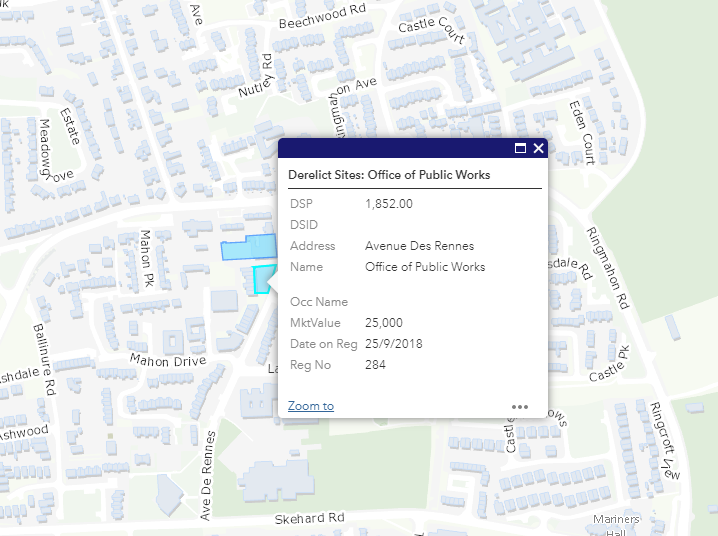
Cllr McCarthy: Welcome return of Bessboro Folly
Cllr Kieran McCarthy has welcomed the rebuilding of Bessboro Folly on the grounds of the former Bessboro Mother and Baby Home in Mahon.
In March of this year the enforcement planning section of Cork City Council investigated the partial demolition of a historic nineteenth century stone folly. Demolition work took place on the building reducing it to its lower floor.
The Sisters of the Sacred Heart of Jesus and Mary released a statement at the time, explaining their decision to demolish half of the folly; “Advice was received that the building’s structurally poor condition posed a grave danger to the public. We were left with no option but to have major structural work carried out on the Bessboro Folly. This ruin is regularly used by young people – and as there were serious safety issues directly related to the extremely poor condition of the building – we had to have this work done to ensure public safety.
Before proceeding, we sought professional advice and we established the building is not on the Record of Monuments and Places (RMP) as maintained under the statute by the Archaeological Survey of Ireland and the Commissioners of Public Works. We also advised the ‘Commission of Investigation into Mother and Baby Homes’ of our intention to carry out this necessary work”.
At the time Cllr Kieran McCarthy criticised the decision to partially demolish the structure saying permission was not granted by Cork City Council for the work; “No permission was granted by the council to interfere with the monument or the folly, so an enforcement file was opened letter sent asking for restoration of the building. The folly has now been rebuilt “block by block” and has been brought back to its original state. My thanks to all involved on all sides in expediating the reconstruction side”.
The two-storey stone folly was built around 1880 and was described as an important surviving landscape feature associated with the gardens of Bessboro House.
